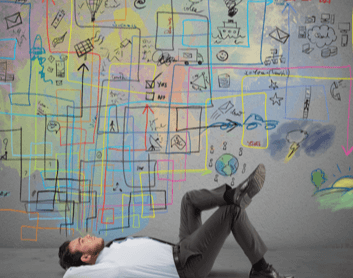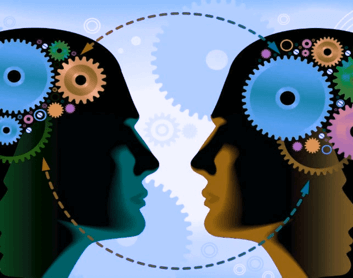
Envisioning the future: Fast forward to 2035
Many of our projects focus on reimagining the future of a product, service or industry. Here we open up the aperture to imagine the broader landscape fifteen years from now, highlighting technological, medical, scientific and cultural advances that could transform the world of tomorrow.
In all of our projects, we take a human-focused approach, thinking carefully about the end-users we are designing for, considering their needs and pain points. Based on stakeholder interviews and ethnographic research, we create fictionalized personas of our end-users so we can construct a “journey map” of their current experience. We then create a future journey map, reimagining how the product or service could transform their experience, and hopefully their lives. We use this same approach here to envision how the world might look in 2035, imagining a day in the life of a young physician, Elena.
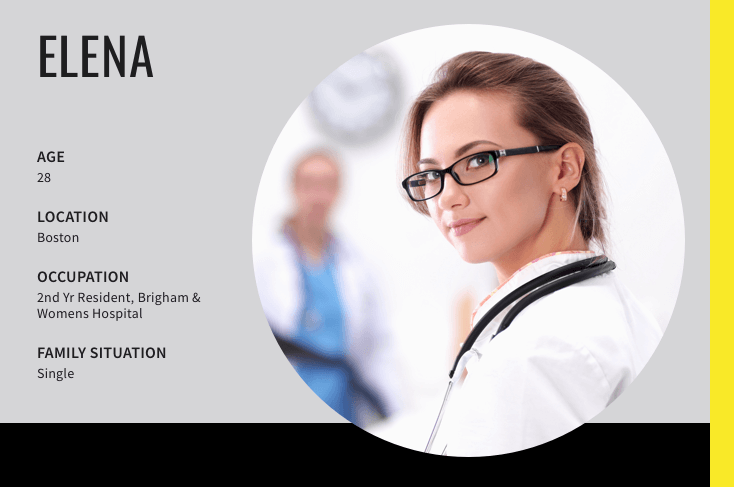
Technology supporting healthier living
Although it’s early, Elena’s wakeup is a gentle one. The lights in her bedroom are synced with her sensory alarm, gradually filling the room with light and sounds. A simulated sunrise casts warm hues of orange and yellow across the room, as the blinds automatically retract and a sensory setting on her alarm releases a bright citrus scent. Although she lives in a busy urban neighborhood, Elena’s condo was designed with the latest smart home technology, including noise cancelling features, connected appliances and a state-of-the-art security system. Given how compressed her days are, it’s essential for Elena to be able to recharge mentally and physically when she’s at home, and something she prioritized when deciding where to live.
This morning, Elena has virtual clinic hours and appreciates that her appointments have been auto-scheduled to give her a little extra sleep. Although her working day is long, 24-hour shifts are fortunately a thing of the past for doctors, and sleep optimization is heavily encouraged by healthcare employers. Sipping coffee, Elena swipes through the patients she’s due to see this morning. The decentralization of healthcare and explosion of digital health apps has empowered people to more confidently manage their own health and wellbeing. This means that physicians like Elena now more typically practice health maintenance instead of solely focusing on caring for those who are already sick.
Vital health information no longer flushed away
Like most of her patients, Elena’s home is filled with smart devices that make her life easier, and healthier. Smart toothbrushes that monitor saliva and measure vital signs have become an easy way for people to adapt their behaviors and benefit from early disease detection. Potentially deadly heart problems can be indicated by changes in saliva and other biomarkers, so detection happens much earlier. Smart toilets also now have built-in sensors to provide data on everything from hormone abnormalities, gastrointestinal issues and ailments that can be detected in urine or feces. Leveraging Artificial Intelligence (AI) to analyze all of this information, smart bathrooms now help people to catch early signs of disease, allowing them to manage chronic conditions like diabetes and heart disease before they threaten their health.
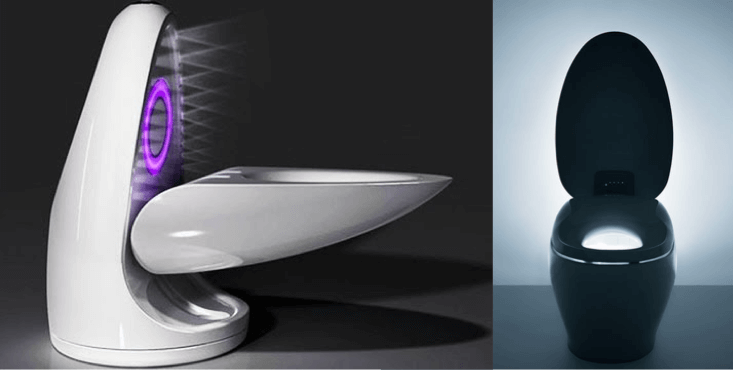 Smart toilets: Young-Sang-Eun’s “ultimate toilet” and Toto Neorest NX2
Smart toilets: Young-Sang-Eun’s “ultimate toilet” and Toto Neorest NX2
These advancements mean that Elena can now rely on more than her medical training to help her patients or confirm a diagnosis. She can also more confidently track how patients are responding to medication, diet and behavioral adjustments that she has prescribed. Aided by all of these new aggregators of health data, and algorithms that flag everything from most at-risk patients, to those most likely to respond to a given treatment, Elena can now focus her time with patients on connecting and building a relationship, not simply entering data into a computer.
Virtual consultations & Robo Pharmacies
Advances in AI have also greatly reduced the previously costly and time-consuming process of consulting with a physician. The unprecedented growth of telemedicine has transformed the healthcare experience, with most physicians now consulting with patients remotely. An appointment with a trusted physician can typically be scheduled and performed within a few hours, without patients even leaving their home.
Elena’s first patient of the day has a rash that is causing him considerable discomfort. After reviewing the images he’s uploaded and asking a number of questions, she recommends that he visit his local Robo Pharmacy for bio-samples. Given their 90% plus accuracy rate, these Robo Pharmacies have become a first port of call for many patients. Bio samples can be analyzed in minutes and standard or customized medications can be prepared by robotic pharmacists, reducing the chance of human error.
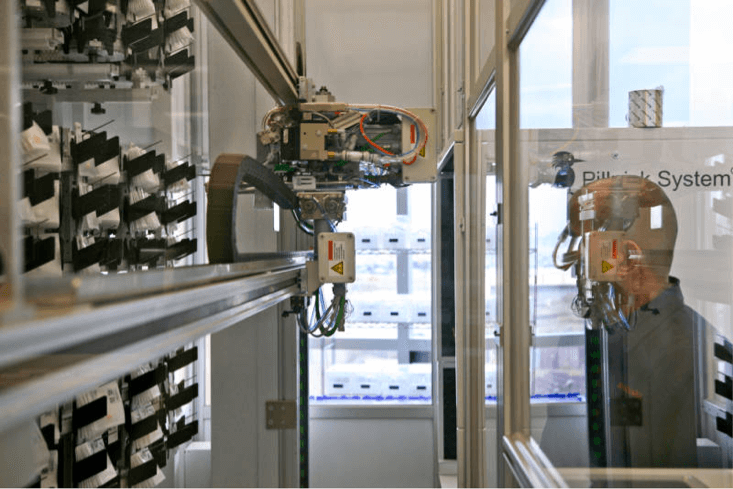 Source: KQED, “Will robots replace pharmacists?”
Source: KQED, “Will robots replace pharmacists?”
Personalized algorithms and Aerofarms support healthier living
Elena’s other patient consultations are relatively routine, so she is able to wrap up her morning on schedule and enjoy lunch at home. In recent years, personalized diets have flourished, using individual algorithms based on a person’s own gut bacteria. Instead of conforming to generalized nutritional guidelines that proliferated for decades, Elena has an eating plan tailored specifically for her. Eating at home means that she can readily access foods selected to optimally nourish and sustain her, instead of relying on what’s available at the hospital cafeteria.
Better still, she can pick fruits and vegetables fresh from the vertical garden that is cleverly integrated into her urban home. Programmed to be virtually self-sustaining, requiring very little space and no sun or soil, this Aerofarm brings Elena considerable joy and makes her feel connected with nature despite living in an urban metropolis.
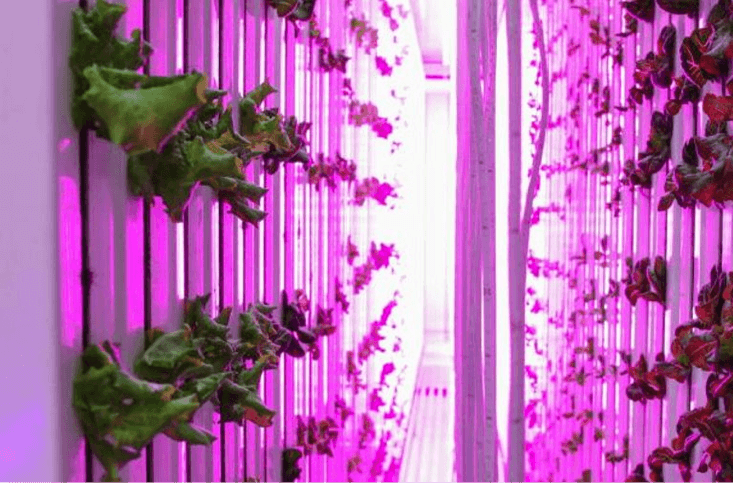 Source: The Leafy Green Machine™ (LGM) is a vertical hydroponic growing system
Source: The Leafy Green Machine™ (LGM) is a vertical hydroponic growing system
Bioprinting offers new hope
An urgent call from the hospital summons Elena to immediately begin her afternoon shift. Autonomous driving means that she can be productive en route, so she is able to review the patient’s medical file sent by the attending physician while her car navigates the city traffic. The patient is young and suffering from acute organ failure; without a kidney transplant they will likely die.
Fortunately, Brigham & Womens Hospital is a cutting-edge facility, with a long history of commitment to innovation in healthcare. Elena has been exposed to a number of pioneering technologies, including medical grade 3D printers. Her hospital now has a whole department dedicated to these printers, and bioprinting is used to produce metal, plastic and electronic implants. Availability of this kind of on-demand, in-house production of replacement organs has dramatically increased survival rates for patients like the one that Elena will soon visit, and has been heralded as one of the biggest breakthroughs of 21st century medicine.
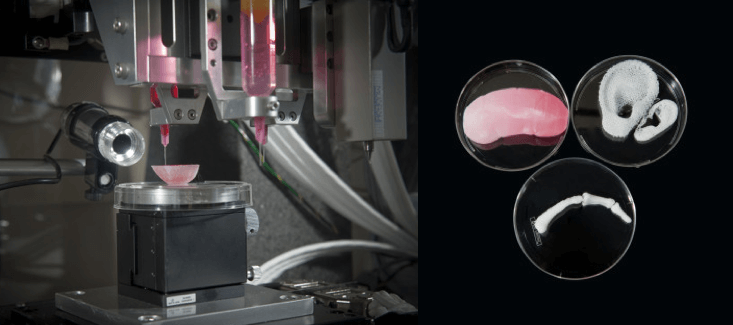 Organ printing at the Wake Forest Institute of Regenerative Medicine
Organ printing at the Wake Forest Institute of Regenerative Medicine
Leveraging technology to make a difference
As Elena’s car pulls into the hospital parking lot, she reflects on the many breakthroughs in healthcare that have emerged over her relatively short lifetime. Born in the year that the iPhone was invented, Elena is a digital native and has never known a time when technology was not omnipresent. Now as a practicing physician, she has been able to directly use these advances to save the lives of patients, and dramatically improve the quality of life for others. Elena is optimistic about what the future holds, and determined to continue leveraging technology to make a difference in the world.
